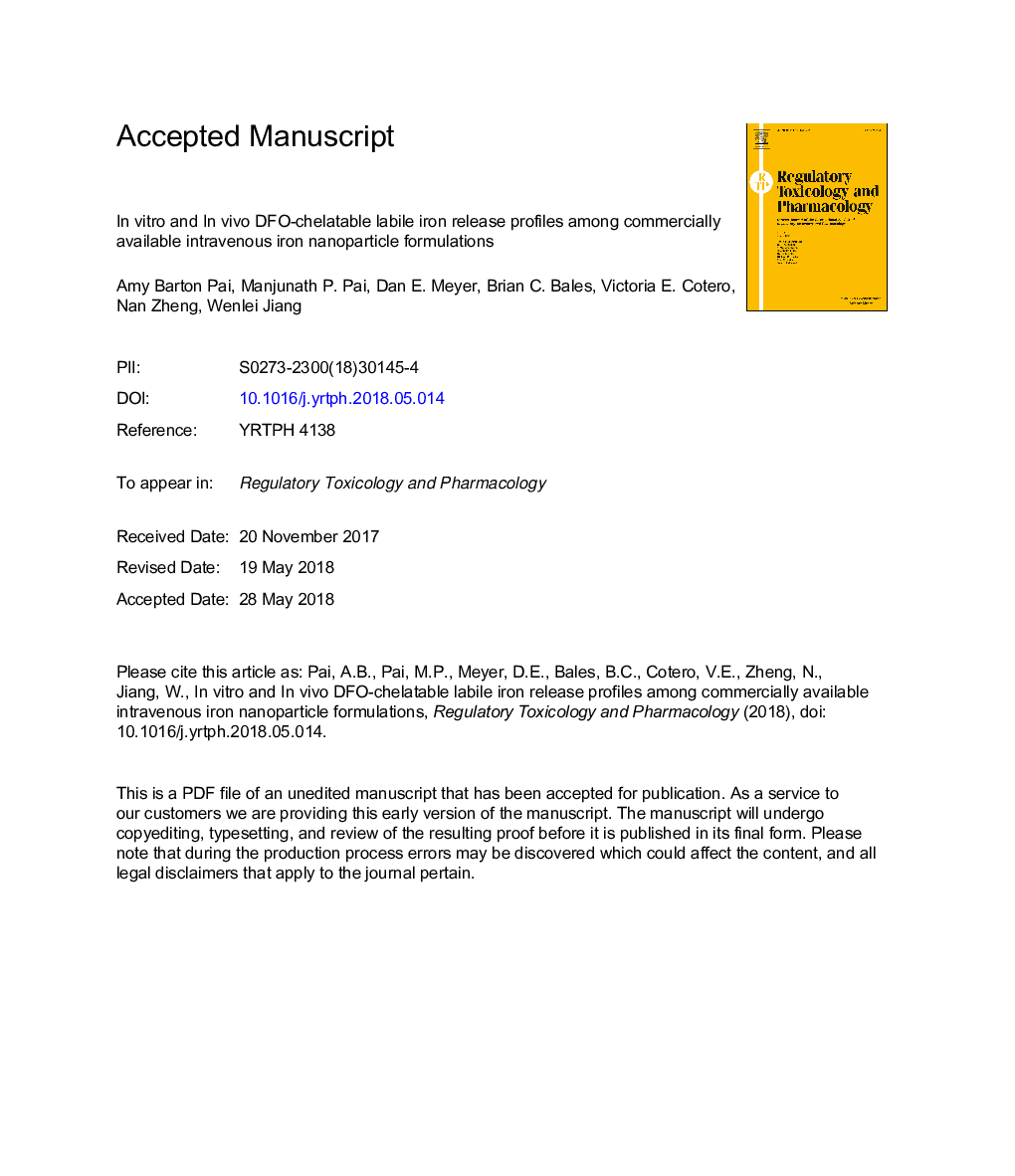| Article ID | Journal | Published Year | Pages | File Type |
|---|---|---|---|---|
| 8550851 | Regulatory Toxicology and Pharmacology | 2018 | 34 Pages |
Abstract
Intravenous (IV) iron formulations are complex colloidal suspensions of iron oxide nanoparticles. Small changes in formulation can allow more labile iron to be released after injection causing toxicity. Thus, bioequivalence (BE) evaluation of generic IV iron formulations remains challenging. We evaluated labile iron release in vitro and in vivo using a high performance liquid chromatography chelatable iron assay to develop a relational model to support BE. In vitro labile iron release and in vivo labile iron pharmacokinetics were evaluated for Venofer®, Ferrlecit®, generic sodium ferric gluconate complex, InFeD®, Feraheme® and a pre-clinical formulation GE121333. Labile iron release profiles were studied in vitro in 150â¯mM saline and a biorelevant matrix (rat serum) at 0.952 mgFe/mL. In vivo plasma labile iron concentration-time profiles (t0-240â¯min) were studied in rats after a 40 mgFe/kg IV dose. In vitro labile iron release in saline was significantly higher compared to rat serum, especially with InFeD®. An in vitro release constant (iKr) was calculated which correlated well with maximal plasma concentrations in the in vivo rat PK model (R2â¯=â¯0.711). These data suggest an in vitro to in vivo correlation model of labile iron release kinetics could be applied to BE. Other generic IV iron formulations need to be studied to validate this model.
Related Topics
Life Sciences
Environmental Science
Health, Toxicology and Mutagenesis
Authors
Amy Barton Pai, Manjunath P. Pai, Dan E. Meyer, Brian C. Bales, Victoria E. Cotero, Nan Zheng, Wenlei Jiang,
